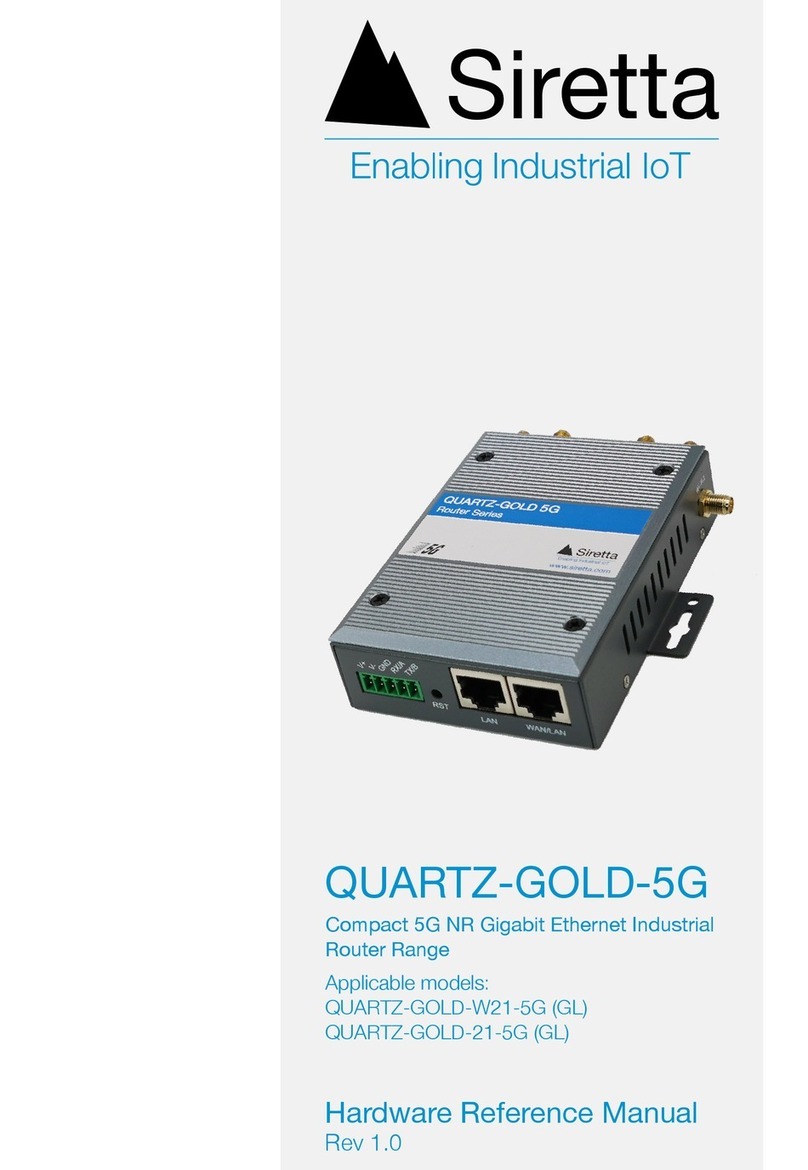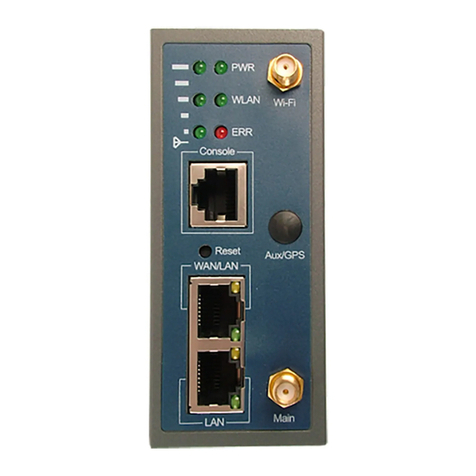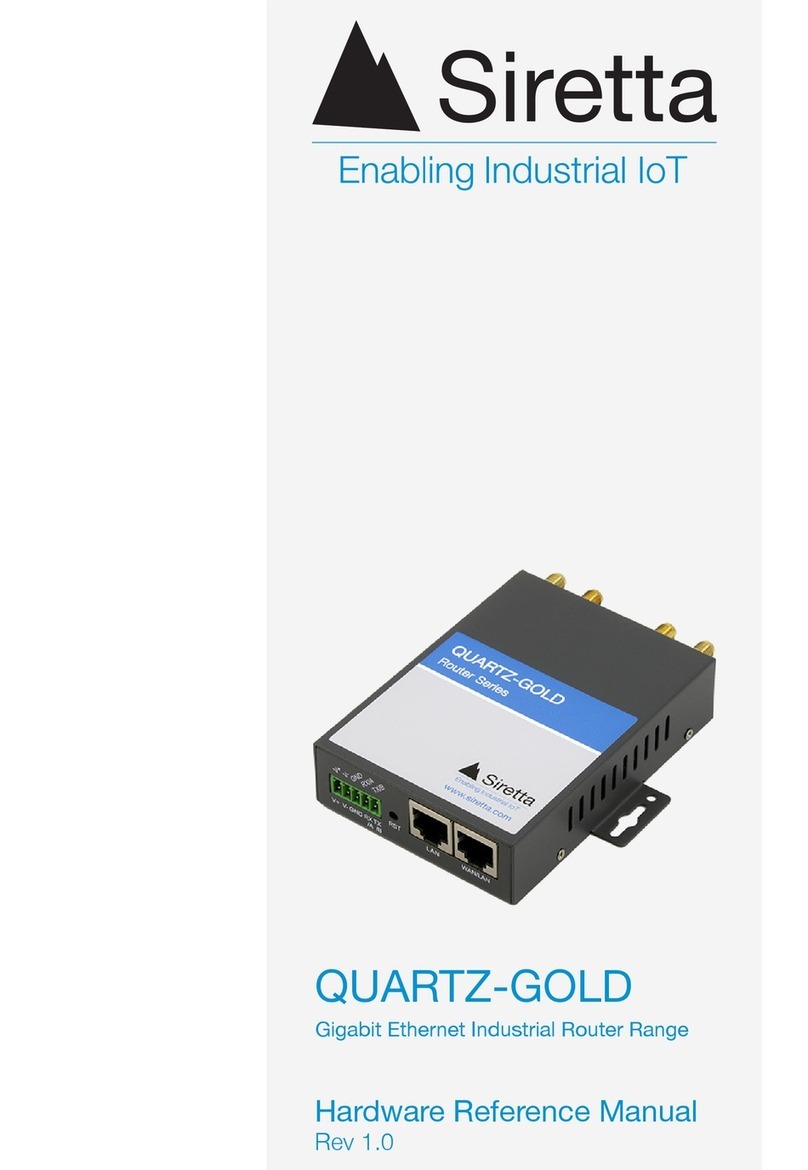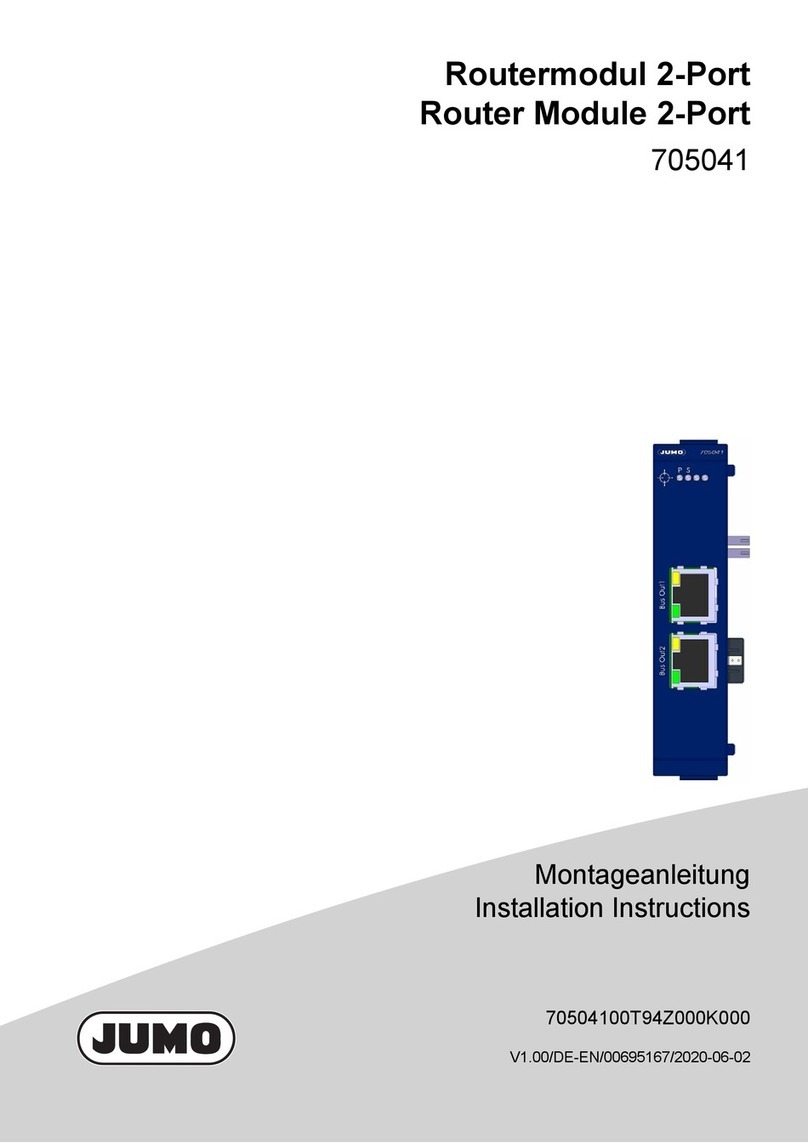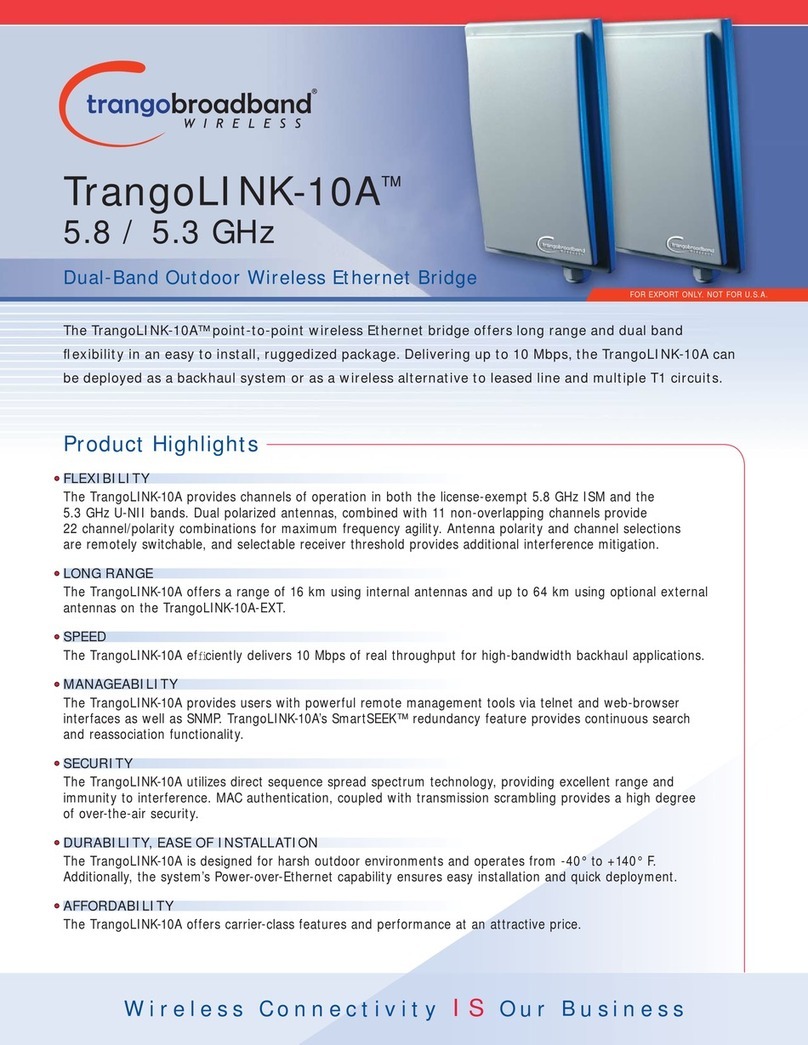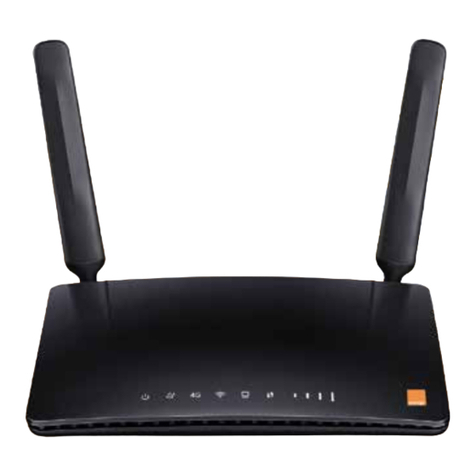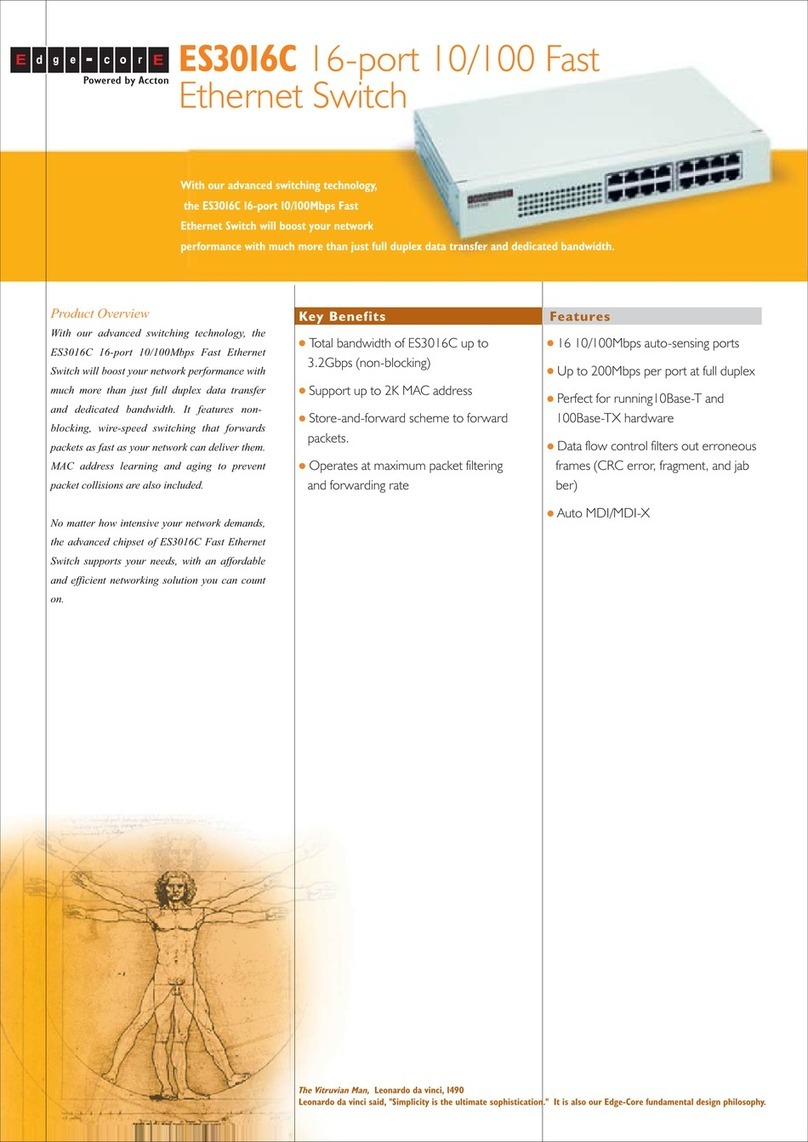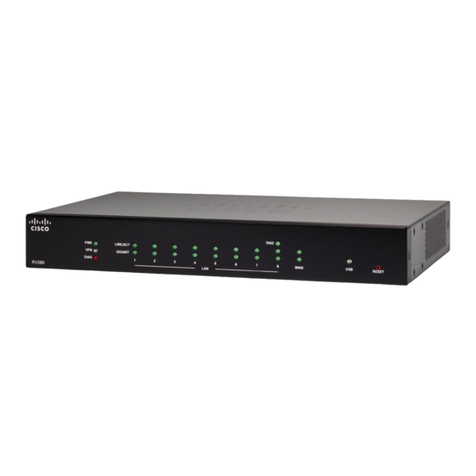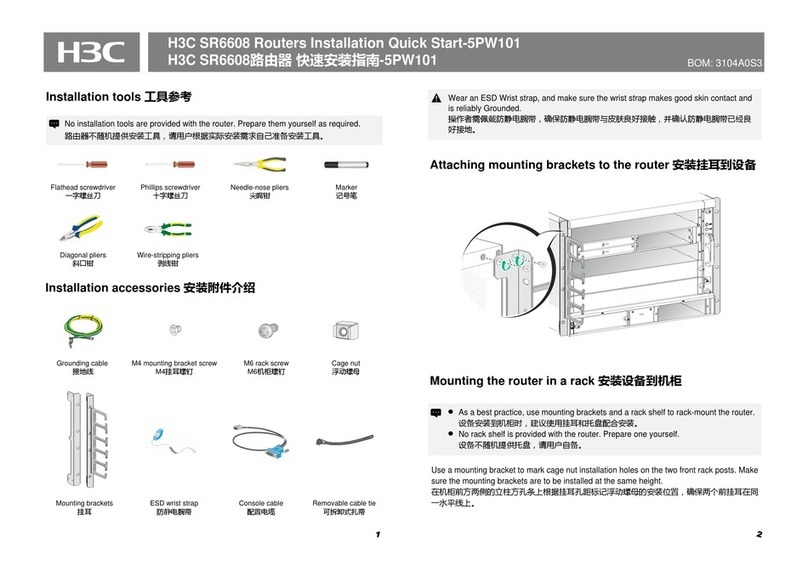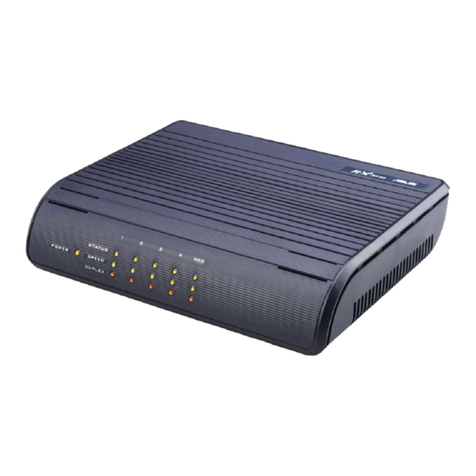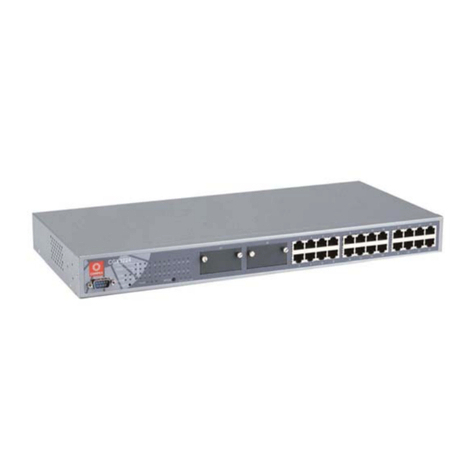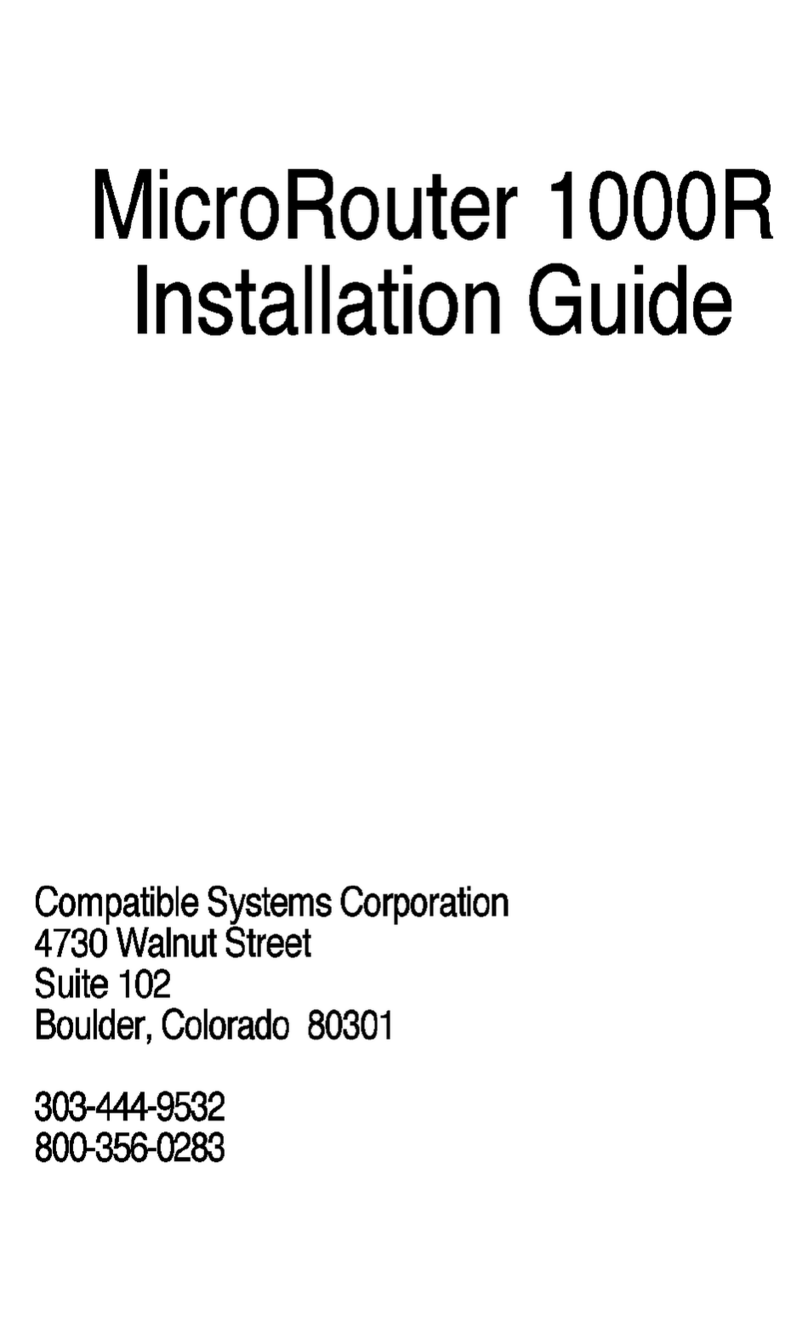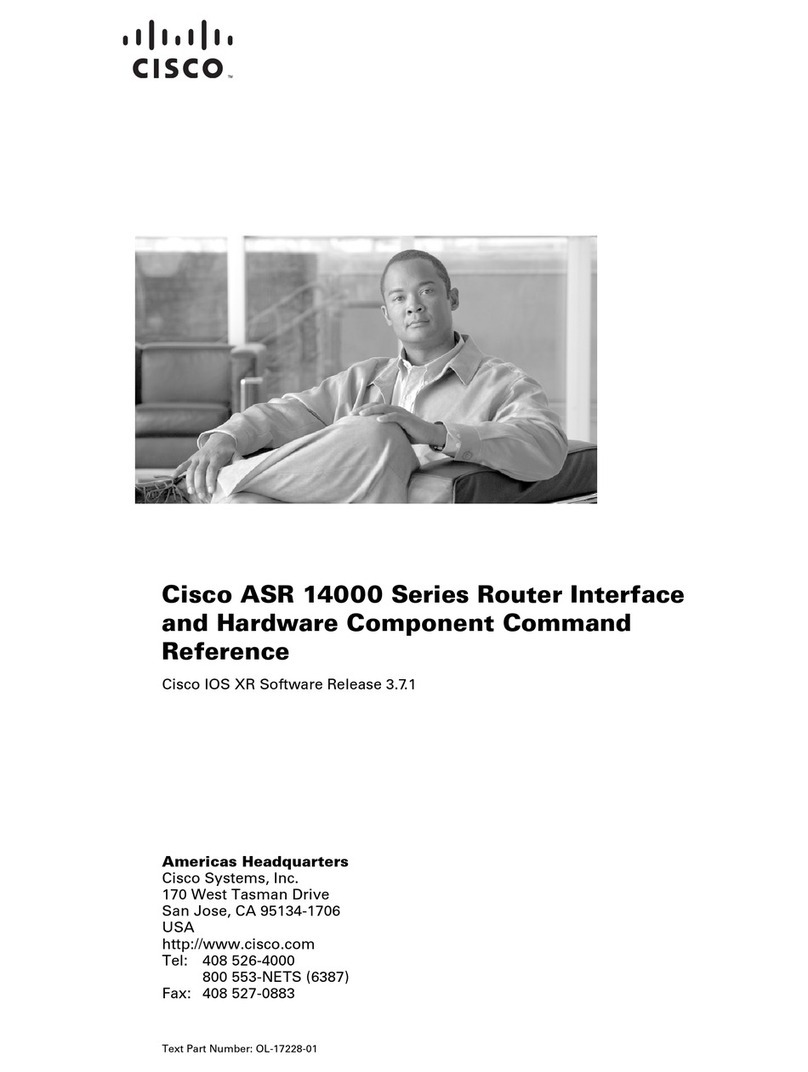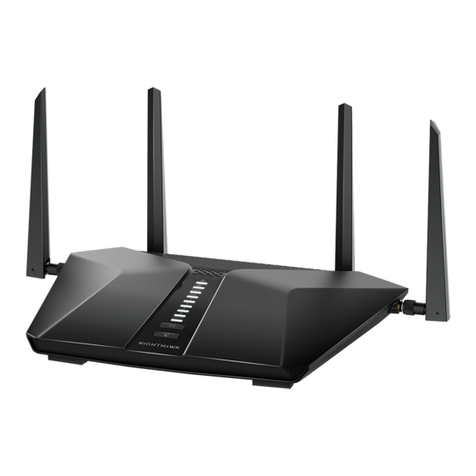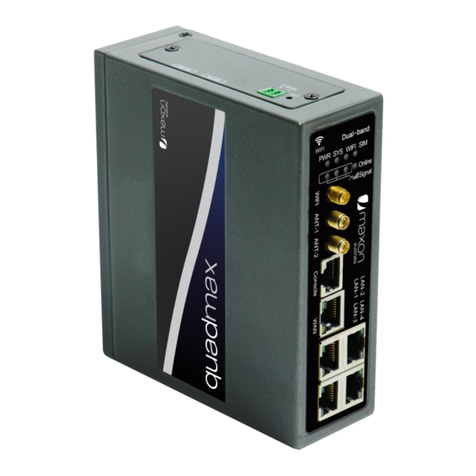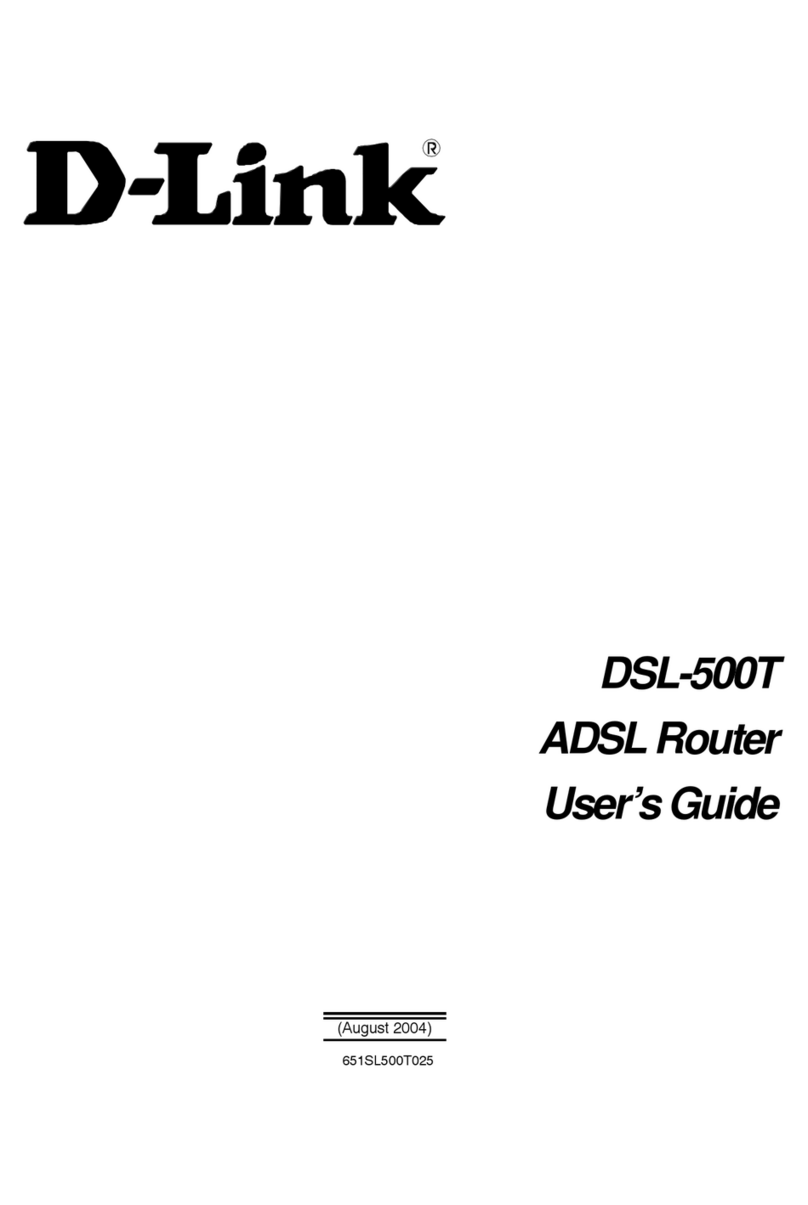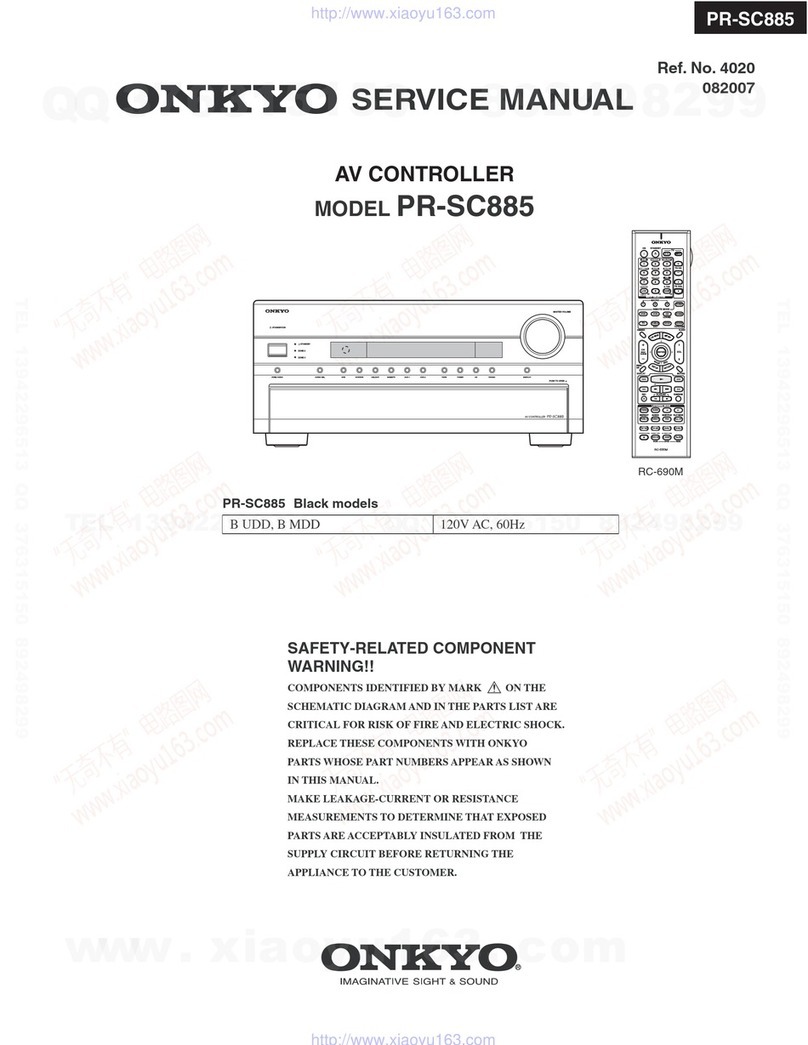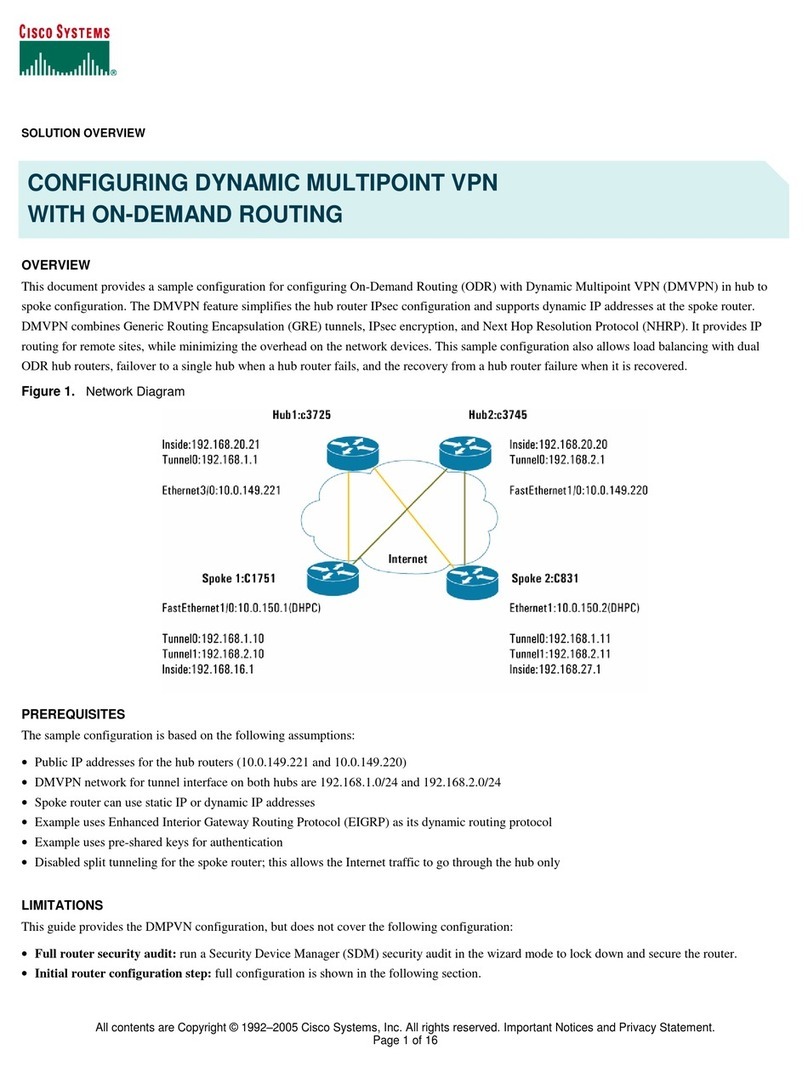SIRETTA QUARTZ-GOLD-5G Quick user guide

2
Download Latest Edition
Table of Contents
Introduction
About Siretta
General Description
Typical Installation
Features
Specifications
Ordering Information
Radio Characteristics
Wi-Fi Characteristics
Cellular Characteristics
Dimensions
QUARTZ-GOLD-5G Images
Status LEDs
Interfaces
LAN / WAN Port
RS232/RS485 Interface
SIM Socket
Antenna Connectors
Power
Copyright Information
Copyright Declarations
Trademarks
Approvals
Disclaimer
Definitions

3
Download Latest Edition
This document covers all the radio, electrical and mechanical aspects of the
QUARTZ-GOLD-5G NR router. For programming and use of this product in a
computer network, please refer to the QUARTZ-GOLD-5G Software Manual.
This manual is intended to guide on how to connect the QUARTZ-GOLD-5G router
into a computer network so that it may be used as the gateway router either to a
WAN or the 5G NR cellular network, with the option of automatic fallback between
the two. For complete network conguration, it is necessary to set up the network
using the built-in web server for which reference to the companion software manual is
required.
Introduction

4
Download Latest Edition
About Siretta
Siretta is a wireless communications company located in Reading, United Kingdom
manufacturing & supplying industrial IoT products since 1998.
Siretta’s product portfolio is made up of:
»Antennas, plus their associated Cable Assemblies & Adapters,
»Cellular Network Analysers
»Industrial Modems
»Industrial Routers
»Associated Cloud Management
Siretta supplies products directly and via a worldwide network of distributors, into
numerous markets and applications across the globe.
Siretta’s distribution partners range from industrial IoT specialists through to global
catalogue organisations.
Whether “off the shelf” or custom solutions are required, Siretta has a wide portfolio of
products to t many types of application.
Siretta’s extensive knowledge and experience in the wireless market allows support of
a wide range of customer applications, focusing on frequencies between 400 MHz to
6 GHz. These encompass modems, routers and antennas for:
»Cellular technologies: GSM / UMTS / LTE (including Cat M & NB) / 5G NR and
other cellular technologies as they emerge.
»Global positioning: GPS/GNSS
»WLAN/Wi-Fi
Whilst providing the above products for the industrial cellular market, Siretta also has
a number of antennas to cover applications for:
»Bluetooth, Zigbee, ISM band, LoRa and Sigfox
With a heavy emphasis on design, Siretta has a team of dedicated Engineers and
Product Managers, who specialise in wireless applications.
Siretta continually makes signicant investment in R&D endeavouring to provide
customers with market leading, future-proofed, wireless solutions. Siretta works
closely with many technology partners to stay at the forefront of industrial IOT.

5
Download Latest Edition
The QUARTZ-GOLD-5G uses a Mediatek 880 MHz MIPS dual-core processor with
256 Mb ash and 2 Gb of DDR3 RAM. This processor runs a Linux based Operating
System which controls the web interface and routing functionality of the router. VPN
throughput is enhanced with a hardware IPSec crypto engine onboard the MIPS
processor.
The cellular capabilities of the QUARTZ-GOLD-5G are powered by the Quectel
RM520N-GL Module. This uses the Qualcomm Snapdragon X55 5G Modem which is
manufactured on a leading edge 7 nm semiconductor fabrication process.
As well as offering two Gigabit Ethernet interfaces, the QUARTZ-GOLD-5G also offers
an RS232 interface that may be used to connect serial ports on products such as
door access controllers and alarm panels to the Internet.
Wi-Fi 5 (802.11ac) comes as an option, with backward compatibility modes allowing
both 2.4 GHz and 5 GHz frequency operation to be supported.
Three modes of networking operation are possible:
1. 5G NR cellular router where the WAN connection of the router is the 5G NR
cellular interface. In this mode all Ethernet interfaces are for LAN use. Internet
connectivity comes from the internal cellular interface.
2. WAN router where one of the Ethernet ports of the router is used as the WAN
connection. The WAN port in this case would normally be connected to a cable
or ADSL modem to obtain Internet connectivity.
3. Backup router which combines the two above modes. The router can switch
between the cellular and WAN connections automatically to maintain Internet
connectivity should one path fail. The preferred route can be set to cellular or
WAN.
General Description

6
Download Latest Edition
This section explains the interfaces on the QUARTZ-GOLD-5G and how to
connect to them. It is recommended that the SIM card necessary for Cellular
operation be inserted into the QUARTZ-GOLD-5G rst and power applied last.
A typical installation will look like this:
Typical Installation
Figure 1. Typical system diagram

7
Download Latest Edition
»2x Gigabit RJ-45 Ethernet Interfaces
»1x SIM Slot
»1x DC Power Interface (7.5 to 32 V dc)
»4x SMA Cellular Interface
»2x RP-SMA Wi-Fi Interface (on models supporting Wi-Fi)
»Serial interface that may be congured as RS232 or RS485/Modbus (RS485/Modbus is an optional feature
that must be ordered at time of purchase)
Physical Interfaces
Features
LAN/WAN Features
»1x Gigabit LAN & 1x Gigabit LAN/WAN (user congurable)
»Hardware NAT capable of 2 Gbps wire speed
»Auto-MDI/MDIX
»Galvanised steel box with grounding point
»Wide operating temperature range
»Supplied with mounting tabs to attach to a at surface such as a wall or cabinet
Physical
»Power – Power applied
»Cellular Signal – signal quality & connection status
»LAN – connection status and activity
»WAN – connection status and activity
»WLAN – connection status and activity
»Error – Cellular online/ofine status
LED Indication

8
Download Latest Edition
5G NR Features
»Supports 3GPP Release 16 features
»Supports NSA (Non-Standalone Architecture) and SA (Standalone Architecture) modes of operation
»Supports FDD and TDD modes
»Supports Frequency Range 1 bands (Sub 6 GHz bands)
»MIMO support (4x4 Download, 2x2 Upload)
»Maximum downlink speed 2.4 Gbps (SA mode); 3.4 Gbps (NSA mode)
»Maximum uplink speed 900 Mbps (SA mode); 550 Mbps (NSA mode)
LTE (4G) Features
»Supports Cat 19 download and Cat 18 upload speeds
»Supports FDD and TDD modes
»Supports MIMO in download direction
»Maximum downlink speed 1.6 Gbps
»Maximum uplink speed 200 Mbps
WCDMA (3G) Features
»Supports 3GPP Release 9 features DC-HSDPA, HSPA+, HSDPA, HSUPA and WCDMA
»Maximum downlink speed 42 Mbps (DC-HSDPA)
»Maximum uplink speed 5.76 Mbps (HSUPA)
»Hardware Crypto Engine delivering 400~500 Mbps IPSec throughput
VPN Features
Cellular Features
»Support for 5G NR (NSA & SA), LTE (4G) and WCDMA (3G) networks
»Network locking
»Network disconnection checking
»Rx Diversity on all network types
Wi-Fi Features
»IEEE 802.11n/ac radio supporting IEEE 802.11a/b/g/n/ac wireless standards
»Concurrently operates in 2.4 and 5 GHz bands
»Standard Reverse Polarity SMA antenna interface
»Access point, Client, and Ethernet bridge modes of operation
»20/40/80 MHz channel width

9
Download Latest Edition
Parameter Value
Operating Temperature -30 to +75°C
Storage Temperature -40 to +85°C
Humidity Range 0 to 95% RH non-condensing
Table 1. Environmental Characteristics
Physical
Specifications
Environmental
Mechanical
Table 2. Mechanical Characteristics
Parameter Value
Dimensions 102.6 mm x 73.5 mm x 27.7 mm (excluding protruding connectors)
Weight 306 g (excluding antennas, SIM card, connectors and packaging)
IP Rating 30
Power Supply Requirements
Table 3. Power Supply Requirements
Parameter Value
Input supply voltage 7.5 – 32 V
Minimum power supply rating 24 W
Recommended Power Supply 12 V @ 2.0 A
Power

10
Download Latest Edition
Power Consumption
Table 4. Power Consumption Characteristics when connected to LTE cell
Cellular Wi-Fi Conguration Measured Power Operating Mode
On Off 2x LAN 230 mA No interfaces connected
On 2.4G & 5G 2x LAN 270 mA No interfaces connected
On Off 2x LAN 265 mA LAN connected to PC, PC network activity idle
On Off 2x LAN 290 mA LAN connected to PC, PC streaming video (Sky News)
On Off 2x LAN 420 mA LAN connected, running a speedtest (speed achieved
103 Mbps download, 11.40 Mbps upload)
On 2.4G 2x LAN 255 mA LAN disconnected, PC connected to 2.4G Wi-Fi but
activity idle
On 2.4G 2x LAN 270 mA LAN disconnected, PC connected to 2.4G Wi-Fi and
streaming video (Sky News)
On 2.4G 2x LAN 415 mA LAN disconnected, PC connected to 2.4G Wi-Fi and
running a speedtest (speed achieved 74.6 Mbps
download, 17.94 Mbps upload)
On 5G 2x LAN 255 mA LAN disconnected, PC connected to 5G Wi-Fi but
activity idle
On 5G 2x LAN 280 mA LAN disconnected, PC connected to 5G Wi-Fi and
streaming video (Sky News)
On 5G 2x LAN 395 mA LAN disconnected, PC connected to 5G Wi-Fi and
running a speedtest (speed achieved 52.49 Mbps
download, 19.28 Mbps upload)
Off 2.4G & 5G 1x WAN, 1xLAN 295 mA WAN connected to broadband router, LAN and Wi-Fi
disconnected
On 2.4G & 5G 1x WAN, 1xLAN 295 mA WAN connected to broadband router, LAN and Wi-Fi
disconnected
On 2.4G & 5G 1x WAN, 1xLAN 325 mA WAN connected to broadband router, LAN connected
to PC, PC network activity idle, Internet connection via
WAN
On 2.4G & 5G 1x WAN, 1xLAN 325 mA WAN connected to broadband router, LAN connected
to PC, PC streaming video (Sky News), Internet
connection via WAN
On 2.4G & 5G 1x WAN, 1xLAN 360 mA WAN connected to broadband router, LAN connected
to PC, PC streaming video (Sky News), Internet
connection via Cellular (WAN backup, broadband
connection fail)

11
Download Latest Edition
1. All measurements were done with 12V input.
2. Current consumption gures given in the table above are average current
measurements over 15 minutes and are not estimates. When the cellular
connection is active there will be short current pulses signicantly greater than
the average values provided. It is important that the 12V supply used to power
the router can deliver at least 2.0 A to prevent network disconnections caused by
these current pulses.
3. All current measurements are started after the router has been rebooted with
the test conguration and time allowed for the router to connect onto the cellular
network, settle on a cell, and get an Internet connection.
4. Sky News may be accessed at https://news.sky.com/watch-live. The news video
is an embedded YouTube frame. It should be possible to access internationally (if
not, try using a VPN). When viewed, quality is set to 1080p and viewed full screen.
5. Speedtests were conducted using the web site https://www.speedtest.net. Current
measurement is from clicking ‘go’ on the website to the speed measurement
results being displayed. Speeds achieved are limited to the capability of the
cellular cell connected to, and in the case of measurements done over Wi-Fi, also
the capabilities of the Wi-Fi connection.
6. The power consumption when used with UMTS, LTE and 5G NR networks is
broadly similar for like connection speeds. Cellular power consumption will be
affected more strongly by proximity to the serving cell (closer to the cell = less
transmitting power required), weather (heavy rain/snow = more signal attenuation
and greater transmit power) and operating band (lower frequencies are generally
lower power). Measurements in the table above were conducted with the CSQ
reported on the status page typically 15 with the connection on band 3 (1800
MHz). A 5G SA connection on band n78 (3500 MHz) using 2x2 MIMO is the
highest power consumption and can be expected to elevate the measured values
by as much as 350 mA at full data rate.
Table 5. SIM Card Reader Characteristics
Parameter Value
SIM card reader type Draw type with card detection switch
SIM card voltage support 1.8 V and 3 V with automatic detection
Sim Card reader
SIM card reader for mini-SIM (2FF) meeting ISO/IEC 7810:2019, ID-000 (25 mm x 15 mm)

12
Download Latest Edition
RS232 characteristics
Table 6. RS232 Conguration Settings
Setting Allowed Values
Baud Rate 300, 600, 1200, 2400, 9600, 19200, 38400, 57600, 115200
Data bits 5, 6, 7, 8
Parity None, odd, even
Stop bits 1, 2
IMPORTANT: Baud rates settings are valid with a load of 3kΩ, 1000pF
Table 7. RS232 Transmitter Characteristics
Transmitter Parameter Conditions Min Typ Max Units
Output Voltage Swing 3kΩ load to ground ±5.0 ±5.4 Volts
Output short circuit current ±35 ±60 mA
The RS232 port is 2-wire (no ow control). The RS232 port may be used in either
client or server mode (server mode requires either a xed IP address SIM or a VPN to
be congured). Caching of serial data is supported for areas where Internet access is
intermittent.
IMPORTANT: Minimum and maximum values are over the operating
temperature range of -30 to +75°C, typical values are at +25°C.
Table 8. RS232 Receiver Characteristics
Receiver Parameter Min Typ Max Units
Voltage Range -15 15 Volts
Threshold Low 0.6 1.3 Volts
Threshold High 1.7 2.4 Volts
Hysteresis 0.3 Volts
Resistance 3 5 7 kΩ
LAN characteristics
2x 10/100/1000 Mbps Ethernet RJ45 Ports. One port is for LAN only. The other port
may be software congured as a LAN or a WAN port.
Although the maximum speed if any individual port is 1 Gbps, the switching matrix
supporting the two ports is capable of 2 Gbps wire speed.

13
Download Latest Edition
Ordering Information
Compact Industrial 5G Quad Gigabit Ethernet Router
All routers may be ordered with RS485/Modbus serial interface. This is an optional
QUARTZ-GOLD-5G- Stock Code 61901
QUARTZ-GOLD-5G + ACCESSORIES - Stock Code 61902
Dual WiFi Compact Industrial 5G Quad Gigabit Ethernet Router
QUARTZ-GOLD-5G – Stock code 61867
QUARTZ-GOLD-5G+ ACCESSORIES - Stock Code 61896
feature. Please contact Siretta sales for details.
The accessories kit contains all the other components required to be able to use the
router:
»2 swivel joint WLAN antennas (Wi-Fi models only)
»4 swivel joint Cellular antennas supplied with detachable magnetic mount bases
with 3m of cable
»RJ45 Ethernet cable
»Multi-region 2A, 12V power supply

Registered in England No. 08405712
VAT Registration No. GB163 04 0349
Siretta Ltd
Basingstoke Road
Spencers Wood
Reading
Berkshire RG7 1PW
sales
email
web
+44(0)118 976 9000
www.siretta.com
14
QUARTZ-GOLD-5G
Hardware Manual
Radio Characteristics
The QUARTZ-GOLD-5G supports Wi-Fi using a MediaTek radio that is IEEE802.11n/
ac compliant. This means that it will work with other Wi-Fi adapters supporting IEEE
802.11a/b/g/n/ac. The 2.4 GHz and 5 GHz wireless bands may be independently
congured.
2.4 GHz bands may be set to 20 or 40 MHz channel width.
5 GHz bands may be set to 20, 40 or 80 MHz channel width.
A channel congured for 2.4 GHz operation may be used as 802.11b only, 802.11g
only, 802.11b/g mixed and 802.11n only, as well as the default 802.11b/g/n mixed
mode (congured by software).
A channel congured for 5 GHz operation can be used as 802.11a only and 802.11n
only, as well as the default 802.11ac mixed mode (congured by software).
Wi-Fi Characteristics
Table 14. 2.4 GHz Wi-Fi band support
IMPORTANT: While the QUARTZ-GOLD-5G can support all 2.4 GHz Wi-Fi channels, the regional settings in the Wi-Fi
conguration page will limit the available channels to meet the regulatory requirements of the country in which it is being used.
Siretta always recommends that the region setting be correctly congured for the country in which the router is being used.
Wi-Fi Channels Supported
Channel Number Centre frequency Frequency Range
1 2412 MHz 2401 – 2423 MHz
2 2417 MHz 2406 – 2428 MHz
3 2422 MHz 2411 – 2433 MHz
4 2427 MHz 2416 – 2438 MHz
5 2432 MHz 2421 – 2443 MHz
6 2437 MHz 2426 – 2448 MHz
7 2442 MHz 2431 - 2453 MHz
8 2447 MHz 2436 – 2458 MHz
9 2452 MHz 2441 – 2463 MHz
10 2457 MHz 2446 – 2468 MHz
11 2462 MHz 2451 – 2473 MHz

15
Hardware Manual
QUARTZ-GOLD-5G
Download Latest Edition
Table 15. 5 GHz Wi-Fi support
Channel Number Centre frequency Frequency Range
36 5.18 GHz 5.17 – 5.19 GHz
38 5.19 GHz 5.18 – 5.20 GHz
40 5.20 GHz 5.19 – 5.21 GHz
42
Registered in England No. 08405712
5.21 GHz 5.20 – 5.22 GHz
44 5.22 GHz 5.21 – 5.23 GHz
46 5.23GHz 5.22 – 5.24 GHz
48 5.24 GHz 5.23 – 5.25 GHz
IMPORTANT: While the QUARTZ-GOLD-5G can support most 5 GHz Wi-Fi
channels, the regional settings in the Wi-Fi conguration page will limit the available
channels to meet the regulatory requirements of the country in which it is being used.
The regional setting also correctly applies transmit power and DFS requirements for
the country of use. Siretta always recommends that the region setting be correctly
congured for the country in which the router is being used.
VAT Registration No. GB163 04 0349
Siretta Ltd
Basingstoke Road
Spencers Wood
Reading
Berkshire RG7 1PW
sales
email
web
+44(0)118 976 9000
www.siretta.com
149 5.745 GHz 5.744 – 5.746 GHz
151 5.755GHz 5.754 – 5.756GHz
153 5.765 GHz 5.764 – 5.766 GHz
155 5.775 GHz 5.774 – 5.776 GHz
157 5.785 GHz 5.784 – 5.786 GHz
159 5.795 GHz 5.794 – 5.796GHz
161 5.805 GHz 5.804 – 5.806GHz
165 5.825 GHz 5.824 – 5.826 GHz

Registered in England No. 08405712
VAT Registration No. GB163 04 0349
Siretta Ltd
Basingstoke Road
Spencers Wood
Reading
Berkshire RG7 1PW
sales
email
web
+44(0)118 976 9000
www.siretta.com
16
QUARTZ-GOLD-5G
Hardware Manual
Download Latest Edition
Mode Speed
2.4G only 150 Mbps
5G only 433 Mbps
2.4G + 5G 150 Mbps + 433 Mbps
Wi-Fi Speed
The QUARTZ-GOLD-5G supports the 3GPP specications for cellular
communications by using the Qualcomm Snapdragon X55 5G Modem.
Cellular Characteristics
Cellular Frequency bands supported
Band Frequency Duplex Mode Common Name 4X4 MIMO DL 2x2 MIMO UL
n1 2100 MHz FDD IMT
n2 1900 MHz FDD PCS
n3 1800 MHz FDD DCS
n5 850 MHz FDD Cellular
n7 2600 MHz FDD IMT-E
n8 900 MHz FDD Extended GSM
n12 700 MHz FDD Lower SMH
n13 700 MHz FDD Upper SMH
n14 700 MHz FDD Upper SMH
n18 850 MHz FDD Lower 800
n20 800 MHz FDD Digital Dividend
n25 1900 MHz FDD Extended PCS
n26 850 MHz FDD Extender Cellular
n28 700 MHz FDD APT
n29 700 MHz SDL Lower SMH
n30 2300 MHz FDD WCS
n38 2600 MHz TDD IMT-E
n40 2300 MHz TDD S-Band
n41 2500 MHz TDD BRS
n48 3500 MHz TDD CBRS
Table 16. 5G NR SA and NSA Bands Supported
*
*
*

Registered in England No. 08405712
VAT Registration No. GB163 04 0349
Siretta Ltd
Basingstoke Road
Spencers Wood
Reading
Berkshire RG7 1PW
sales
email
web
+44(0)118 976 9000
www.siretta.com
17
QUARTZ-GOLD-5G
Hardware Manual
Download Latest Edition
Suppoted Unsupported
*SA mode only
*
*
*
Band Frequency Duplex Mode Common Name 4X4 MIMO DL 2x2 MIMO UL
n66 1700/2100 MHz FDD Extended AWS
n70 2000 MHz FDD Supplementary AWS
n71 600 MHz FDD Digital Dividend
n75 1500 MHz SDL L-Band (EU)
n76 1500 MHz SDL Extended L-Band (EU)
n77 3700 MHz TDD C-Band
n78 3500 MHz TDD C-Band
n79 4700 MHz TDD C-Band
Table 16. 5G NR SA and NSA Bands Supported (Continued)

18
Download Latest Edition
Band Frequency Duplex Mode Common Name 4X4 MIMO DL
1 2100 MHz FDD IMT
2 1900 MHz FDD PCS
3 1800 MHz FDD DCS
4 1700 MHz FDD AWS-1
5 850 MHz FDD Cellular
7 2600 MHz FDD IMT-E
8 900 MHz FDD Extended GSM
12 700 MHz FDD Lower SMH
13 700 MHz FDD Upper SMH
14 700 MHz FDD Upper SMH
17 700 MHz FDD Lower SMH
18 850 MHz FDD Lower 800
19 850 MHz FDD Upper 800
20 800 MHz FDD Digital Dividend
25 1900 MHz FDD Extended PCS
26 850 MHz FDD Extended Cellular
28 700 MHz FDD APT
29 700 MHz FDD Lower SMH
30 2300 MHz FDD WCS
32 1500 MHz FDD L-Band
34 2000 MHz TDD IMT
38 2600 MHz TDD IMT-E
39 1900 MHz TDD DCS-IMT Gap
40 2300 MHz TDD S-Band
41 2500 MHz TDD BRS
42 3500 MHz TDD CBRS
43 3700 MHz TDD C-Band
46 (LAA*)5200 MHz TDD U-NII-1-4
48 3500 MHz TDD CBRS
Table 17. LTE Bands Supported

19
Download Latest Edition
Band Frequency Duplex Mode Common Name 4X4 MIMO DL
66 1700 MHz FDD Extended AWS
71 600 MHz FDD Digital Dividend
Table 17. LTE Bands Supported continued
*LAA (License Assisted Access). A method of using the unregulated 5 GHz wireless
spectrum to assist data downloads, introduced in 3GPP Release 13.
Table 18. WCDMA (3G) Bands Supported
Band Frequency Common Name
1 2100 MHz IMT
2 1900 MHz PCS
4 1700 MHz AWS-1
5 850 MHz Cellular
8 900 MHz Extended GSM
19 800 MHz Upper 800
Transmit Power
Table 19. Transmit Power
Technology Class Maximum Power
5G NR bands 3 23 dBm ±2 dB
5G NR bands n38/n40/n41/n77/n78/n79 HPUE*2 26 dBm +2/-3 dB
LTE (4G) bands 3 23 dBm ±2 dB
LTE (4G) bands B38/B41/B42/B43 HPUE*2 26 dBm ±2 dB
WCDMA (3G) bands 3 24 dBm +1/-3 dB
*HPUE (High Power User Equipment) is a special class of LTE allowed on a single carrier. Because of
the higher allowed transmit power, this allows for a greatly increased range for the serving cell.

20
Download Latest Edition
Table 20. Modulation
Technology Supported Modulation
5G NR Uplink π/2-BPSK, QPSK, 16QAM, 64QAM and 256QAM
5G NR Downlink QPSK, 16QAM, 64QAM and 256QAM
LTE (4G) Uplink QPSK, 16QAM, 64QAM and 256QAM
LTE (4G) Downlink QPSK, 16QAM, 64QAM and 256QAM
WCDMA (3G) QPSK, 16QAM and 64QAM
Table 21. Data Transmission Rates
Technology Maximum Download Maximum Upload
5G NR SA 2.4 Gbps 900 Mbps
5G NR NSA 3.4 Gbps 550 Mbps
LTE (4G) 1.6 Gbps 200 Mbps
UMTS (3G) DC-HSDPA 42 Mbps
UMTS (3G) HSUPA 5.76 Mbps
UMTS (3G) WCDMA 384 Kbps 384 Kbps
IMPORTANT: All upload and download speeds are those supported by the QUARTZ-
GOLD-5G. Actual speeds achieved will be dependent on the capabilities of the network cell
connected to, any network congestion, and the radio link quality.
Supported Modulation
Data Transmission Rates
Table of contents
Other SIRETTA Network Router manuals
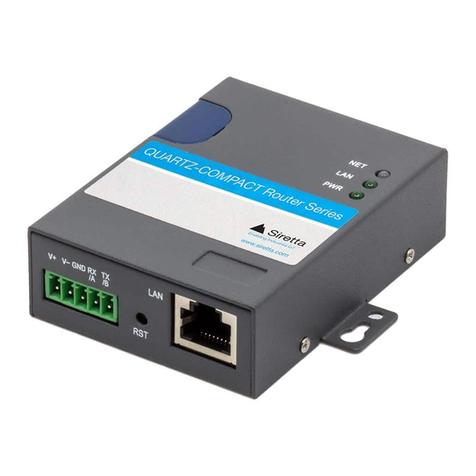
SIRETTA
SIRETTA QUARTZ-COMPACT-UMTS Quick user guide
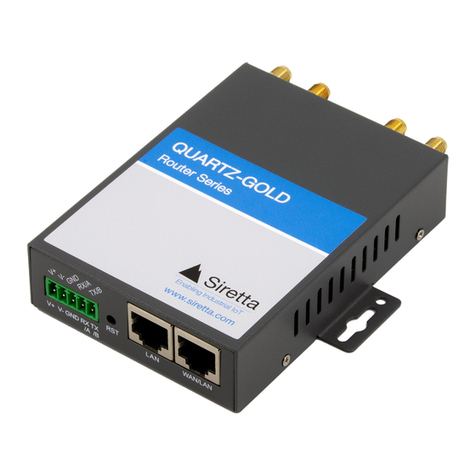
SIRETTA
SIRETTA QUARTZ-GOLD Series User manual

SIRETTA
SIRETTA MICA-Compact Series Quick user guide
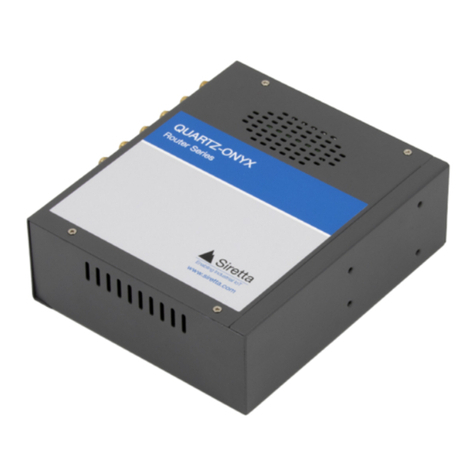
SIRETTA
SIRETTA QUARTZ-ONYX User manual

SIRETTA
SIRETTA QUARTZ-ONYX Quick user guide
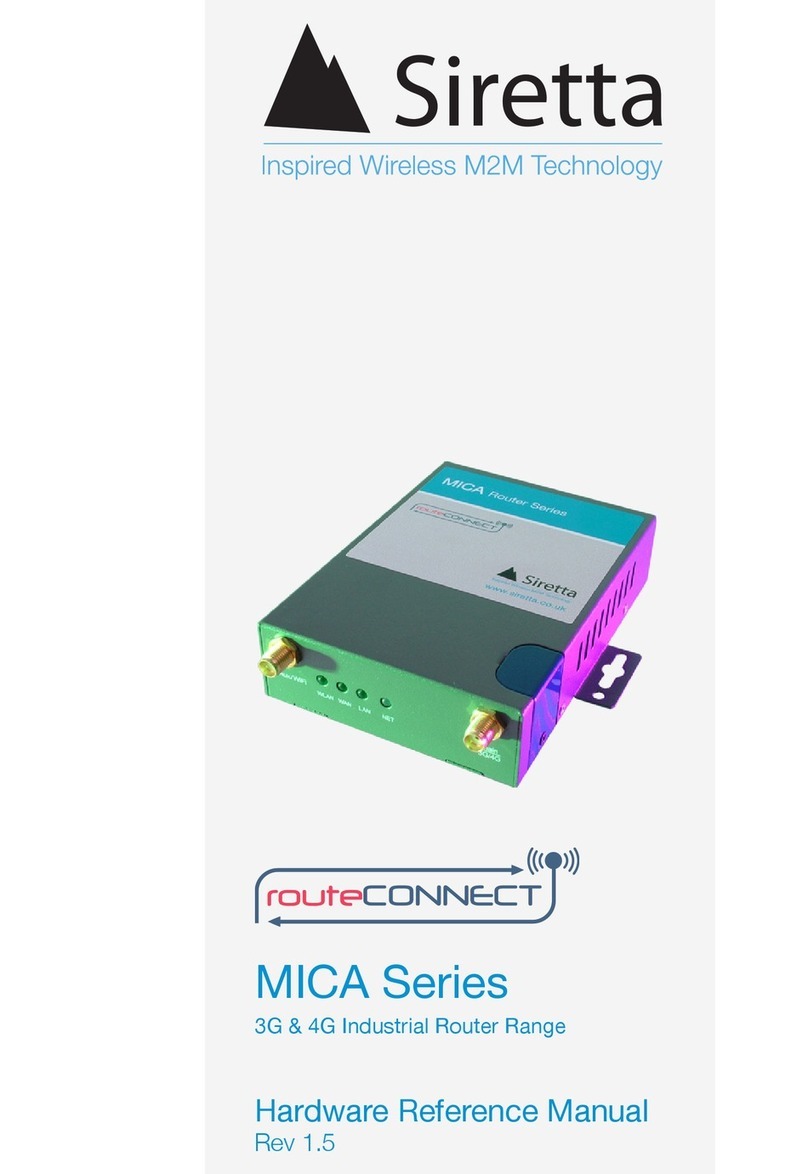
SIRETTA
SIRETTA routeCONNECT MICA LTE Quick user guide
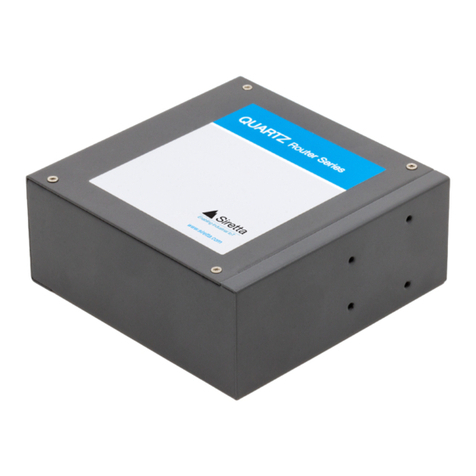
SIRETTA
SIRETTA QUARTZ Series Quick user guide
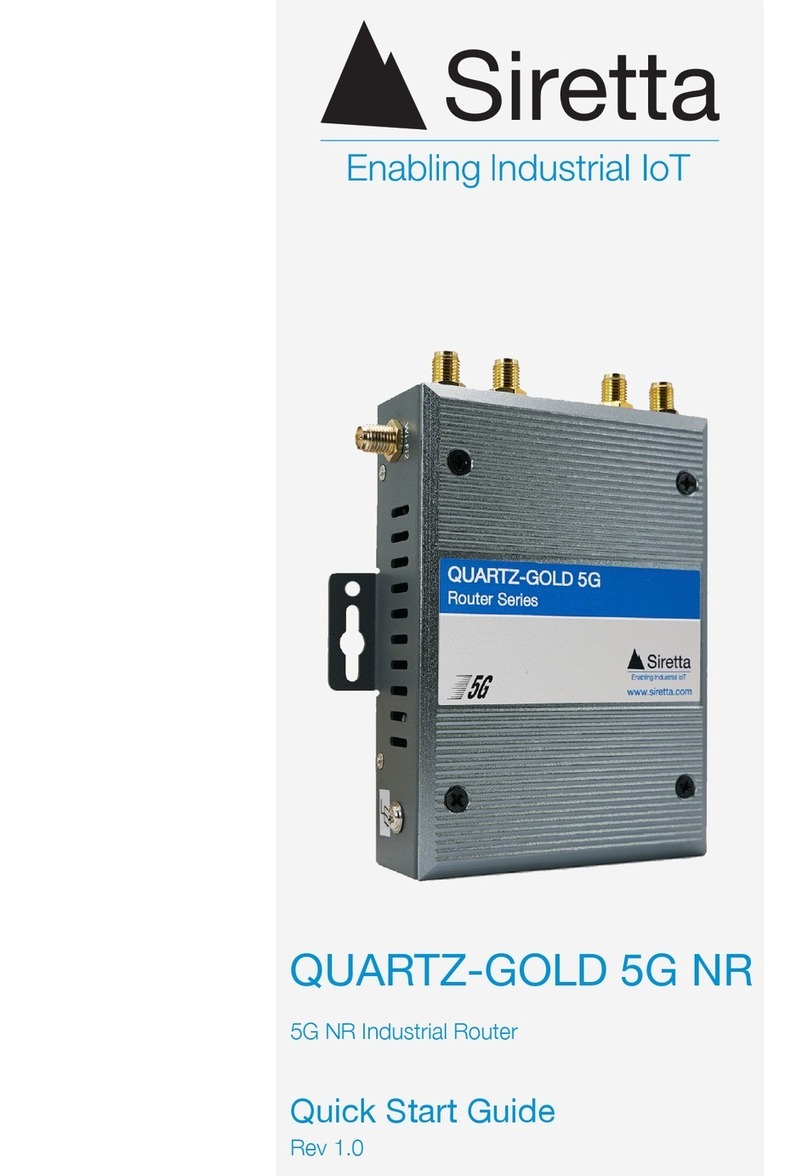
SIRETTA
SIRETTA QUARTZ-GOLD 5G NR User manual
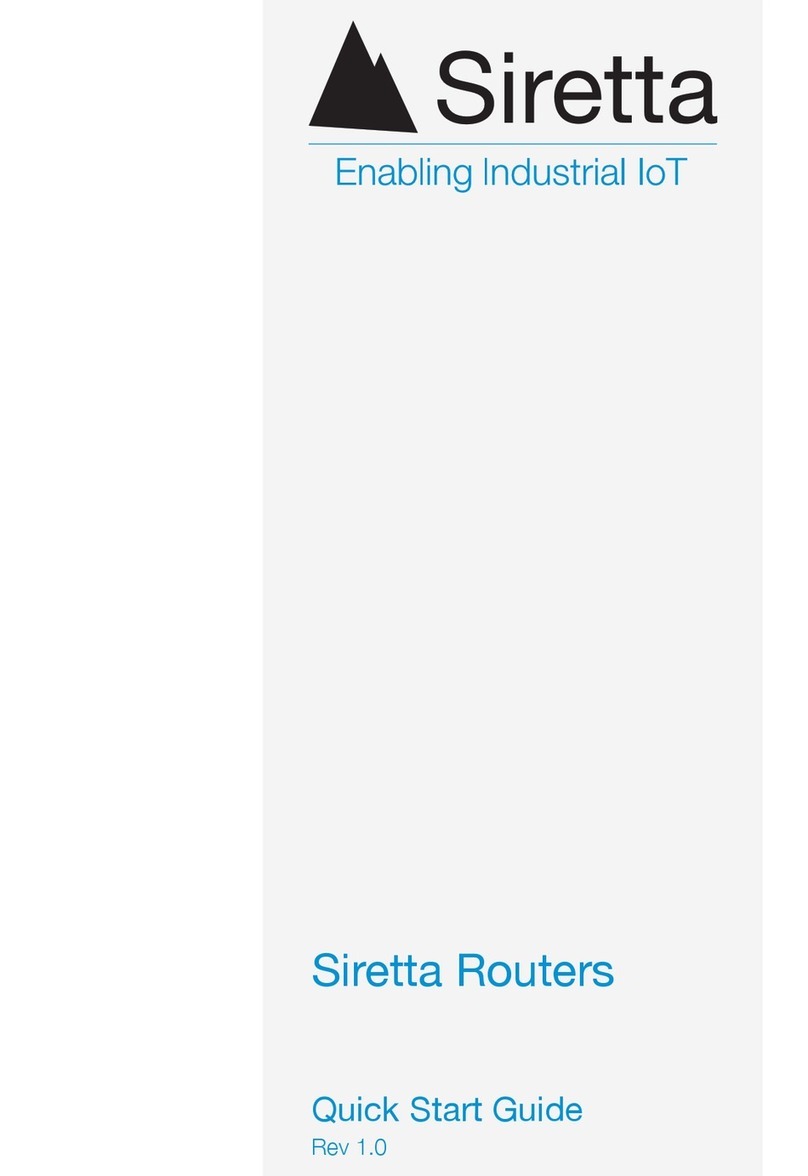
SIRETTA
SIRETTA QUARTZ User manual
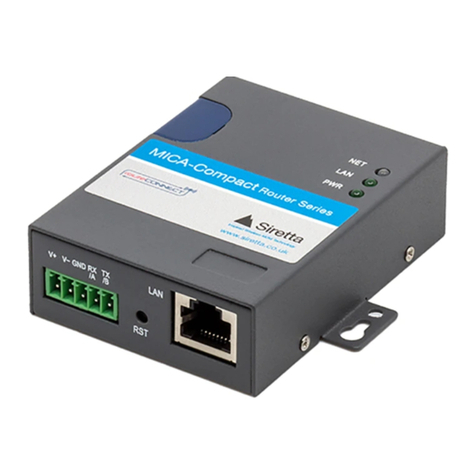
SIRETTA
SIRETTA QUARTZ-COMPACT Series Mounting instructions

